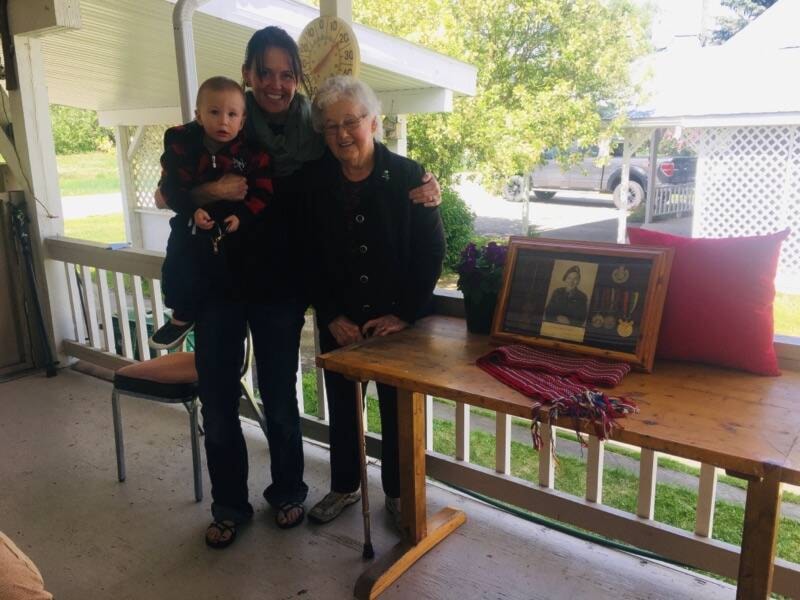George John Cameron was born in Fisher Branch, Manitoba and moved to Golden in 1963.
He spent the majority of his life working in the logging industry as a faller before taking over the position of road supervisor.
Cameron lived a quiet life, playing violin in the privacy of his own home and spending quality time with the members of his family.
Prior to his arrival in the Columbia Valley, Cameron served in the military during the Second World War as a private in the Canadian Army.
Upon returning from the war, he came to Winnipeg, Man., where he met his future wife, Margaret. Together they settled in Enderby, where they married, before coming to Golden to raise their family.
Since his death in 2012, Cameron has been recognized as one of many Métis veterans who served our country by the Métis National Council, as a part of their campaign with the federal government to honour the legacy of the Métis, called the Métis Veterans Legacy Program.
His name can be found on a monument erected at Batoche, Sask., the site of the historic Battle of Batoche during the North-West Rebellion of 1885. He is one of 5,000 Métis veterans with their names memorialized at Batoche.
Many Métis who enlisted were descendants of Métis who fought for Louis Riel and Gabriel Dumont in 1885, according to the Métis Nations Veterans society.
In the years following the First and Second World Wars, as well as the Korean War, Métis veterans have struggled to obtain veterans’ benefits for their military service, not receiving the same supports, resources or benefits promised to them that were afforded to other non-Métis Veterans.
In 2019, the federal government offered a formal apology.
“We apologize that the benefits offered to the veterans after the World War were not designed to meet the needs of the Métis veterans,” Veterans Affairs Minister Lawrence MacAulay said at the time.
“We regret that our country has take three-quarters of a century to address the concerns of Métis veterans who joined Canada’s call to arms to enter the Second World War.”
The apology came with a $30-million commitment to recognize Métis veterans, with all living Métis vets receiving a cheque for $20,000 as a ‘recognition payment’.
Cameron, who pre-deceased the announcement, did not have a chance to see the apology or financial compensation. However, his wife, Margaret, who survives him, was able to claim the cheque, presented to her by Ed Deslisle, a Métis elder, this past summer.
“It was quite heartfelt, we couldn’t present to George, but it was still a special occasion, it’s a great thing that George was recognized after all these years and his family got to see him recognized for what he did for this country,” said Delisle.
“I was really honoured to be a part of it, it’s very gratifying to know his name is amongst the rest of the Métis who served.”
It’s hard to say how many Métis veterans served- when enlisting, Métis soldiers were not allowed to self-identify as Métis. In military records, soldiers were categorized as either First Nations or by their European ethnicities.
The struggle for restitution continues to this day for many.
Indigenous Veterans Day is now acknowledged on Nov. 8 in Canada, and was first commemorated in 1994.
Cameron was buried at the Royal Canadian Legion Cemetery. The cemetery was established in the 1930s by the Legion for veterans and their families.
